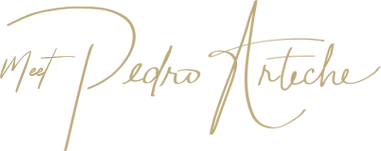Dental Health Nutrition During Pregnancy
Hormonal changes during pregnancy can make you more vulnerable to the formation of plaque. Plaque can lead to inflammation and bleeding of the gums. This is called pregnancy gingivitis or pregnancy gum disease.
The best way to prevent pregnancy gum disease is to practice good oral hygiene, supported by a healthy diet. Pedro recommends the following oral hygiene tips to keep the teeth healthy during pregnancy:
- Brush and floss your teeth twice a day. If you struggle with morning sickness, brush your teeth in the late morning when you feel some relief.
- Use a toothbrush with a small head and soft filaments. The smaller head will feel more comfortable in the mouth and stop you feeling so nauseous.
- Rinse your mouth with plain water if you experience any vomiting to wash away any stomach acid that could attack the enamel.
- Wait about an hour to brush your teeth after vomiting. The acid from your stomach softens enamel and brushing immediately may damage the teeth.
- Do not smoke because it increases the risk of gum disease, which is already more prevalent in pregnant women.
- Do not use a mouthwash that contains alcohol.
- Schedule time with Pedro for a thorough cleaning, check-up and discussion about maintaining the health of your teeth during your pregnancy.
Your Pregnancy Diet and Your Child’s Dental Health
A baby’s teeth first begin to develop in the womb. What you consume during your pregnancy has a direct impact on how healthy your child’s teeth will be. Of course, your child will need to develop their own dental habits eventually, but you can certainly give them a head-start by taking in enough Vitamin A, C and D, as well as calcium, protein and phosphorous.
- Try to eat a range of different foods, so you are getting a variety of nutrients.
- If nausea is preventing you from eating a balanced meal, eat small amounts of food whenever possible throughout the day.
- Choose healthy snacks like cheese, unsweetened yogurt, fruits and Avoid sugary and acidic snacks while your teeth are at risk.
- If you crave sugary foods and drinks, enjoy them with your main meal, so the increased saliva production can help wash excess sugars away.
- Read food labels and choose the foods you eat wisely.
- Drink water or milk instead of juice and soft drinks.
- Drink fluoridated water to give your teeth a boost.
- Increase your intake of folic acid to reduce the risk of neural tube defects. There are dietary supplements to help you get the recommended 600 micrograms per day. You can also get it from asparagus, lettuce, spinach, legumes, papaya, oranges, strawberries and
What to Eat During Dental Treatment
Braces
The front teeth often feel a little sensitive and tender after having braces fitted or tightened, especially for the first couple of weeks. This is perfectly normal. It takes time for the teeth and mouth to get used to your braces. The wires put pressure on the teeth as they’re gradually pulled into their new, improved positions.
The tenderness will eventually disappear, but you can make the process easier by avoiding foods that could increase this discomfort.
Some of Pedro’s favourite brace-friendly foods include:
- Scrambled eggs
- Pancakes
- Porridge
- Soft, crust-less bread
- Fruit or vegetable smoothies
- Soft cheese
- Yogurt
- Smooth nut butters
- Soft, ripe fruits
- Avocado
- Hummus
- Mashed potato
- Steamed vegetables
- Soups
- Pasta with a sauce
- Sweet potato
- Macaroni cheese
- Tofu
- Fish
Chewing on anything hard can damage your braces. This includes bad habits like chewing on a pen or your fingernails. You will need to make a conscious effort to protect your braces for as long as you are wearing them.
Avoid eating very chewy, crunchy or hard foods like ice, nuts, hard sweets, corn on the cob, raw carrots, apples, gum, toffees and popcorn. Make wise choices to keep your braces and your teeth safe from damage.
Leave a message on our contact form to schedule an appointment.
Back to treatments
